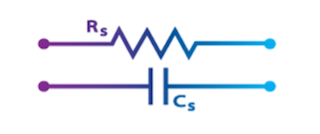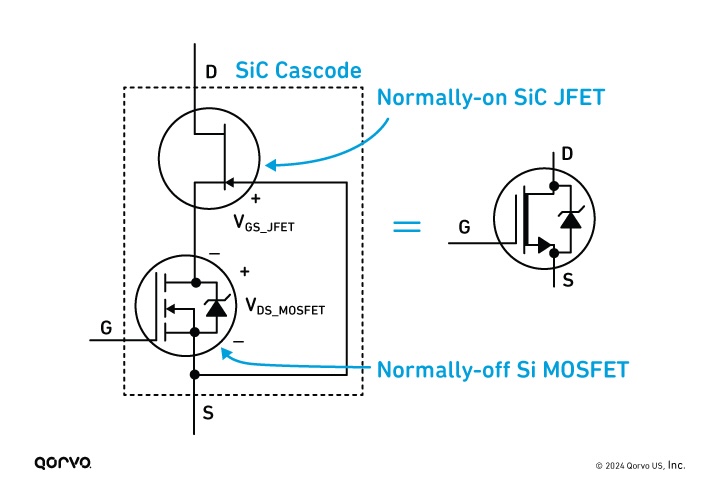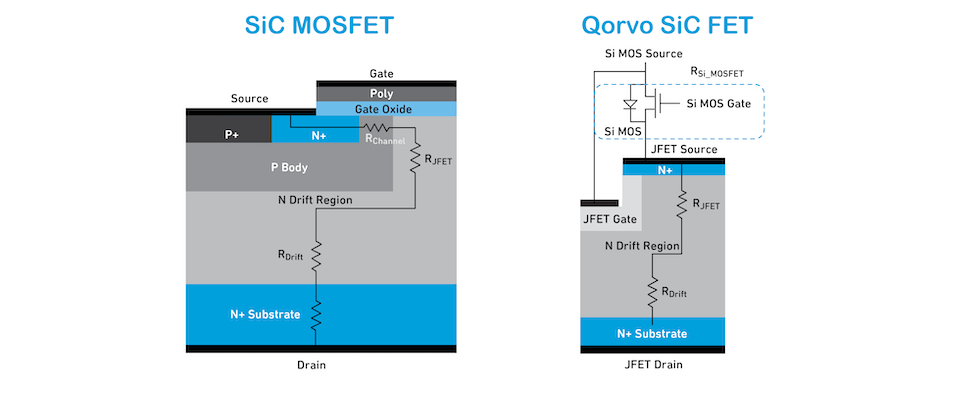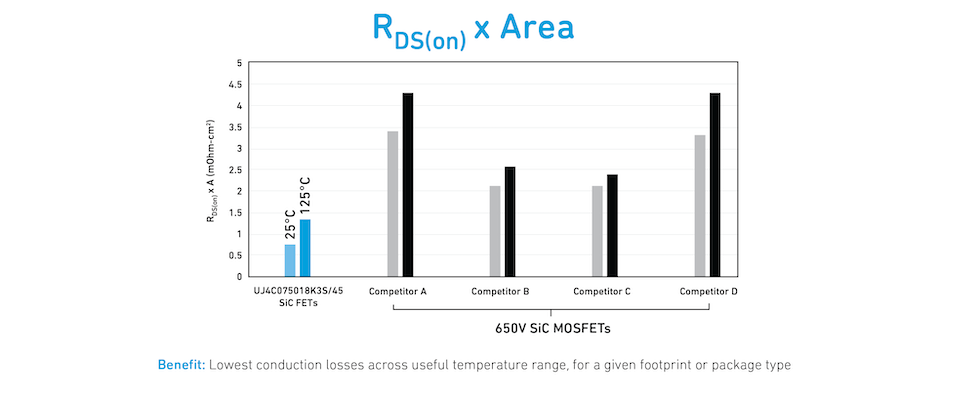The Advantages of the Qorvo SiC FET vs SiC MOSFETs
March 14, 2024
In a previous blog post titled “The Transition from Si to SiC in Power Electronics," we explored how silicon carbide (SiC) was becoming a ‘life-altering’ technology in the power electronics marketplace. With its many technological advantages over silicon (Si), as shown in Figure 1, one can easily see why SiC has become the new go-to technology in many applications, such as electric vehicles (EVs), data centers and solar energy/renewables.
.png?la=en&hash=8E8388199FB9A50A57E29209778B7F890C761A48)
Many end-product manufacturers have adopted SiC over Si technology to develop their power supplies based on bipolar junction transistors (BJTs), junction gate field effect transistors (JFETs), metal oxide semiconductor field effect transistors (MOSFETs), and insulated gate bipolar transistors (IGBTs). However, Qorvo's development of the SiC ‘cascode’ FET device (shown in Figure 2 below) has taken the technology one step further. These devices are based on a unique ‘cascode’ circuit configuration, where a normally-on SiC JFET device is co-packaged with a Si MOSFET to produce an integrated normally-off SiC FET device. In the following paragraphs, we will explain how Qorvo-developed SiC FETs (cascode FET) have additional advantages over their counterpart SiC MOSFETs.
Need Help with Your Designs?

Visit the SiC FET Design Tips Site, which provides a variety of resources—from user guides to videos and webinars—to help you build the best products.

First, a Review of the Advantages of Using SiC Versus Si
To begin, SiC MOSFETs, or SiC FETs, have several advantages over Si devices. For starters, SiC is a wide bandgap material which means it has higher breakdown voltage and a much thinner device can be used to support higher voltages. Other advantages of SiC over Si are:
- For a given voltage and resistance class, SiC enables higher operating frequencies and, hence, smaller size components, thus reducing the overall system size and cost.
- For the higher voltage classes (1200V or higher), SiC enables high-frequency switching with low power losses. Si devices in these voltage classes are essentially non-existent.
- In any given package, SiC enables lower ON-Resistance and lower switching losses compared to Si.
- SiC allows customers to achieve higher efficiency with better thermal performance and even higher system power ratings in the same design as Si
These advantages also fold into the performance of the Qorvo SiC FET, a newer but more powerful device optimized for several power applications. The additional advantages the Qorvo SiC FETs bring are:
- The architecture of the Qorvo SiC FET utilizes standard Si gate drivers, which offer ease of transition and design flexibility from Si to SiC
- Lowest industry drain-to-source ON-resistance RDS(ON), for a given package which maximizes system efficiency
- Lower capacitance allows even faster switching, hence higher operating frequency; this further reduces the size of the bulky passive components like inductors and capacitors
- SiC FETs in higher voltage classes (1200V or higher) enable higher operating frequencies when compared to Si IGBTs, which traditionally service this market segment but are generally sluggish and used only at lower frequencies, resulting in higher switching losses.
- The Qorvo SiC FET device enables smaller die size for a given RDS(ON), and mitigates the gate oxide reliability concerns typical in SiC MOSFETs
A Closer Look at SiC MOSFETs Versus the Qorvo SiC FET
Let’s take a moment to better understand the differences between the SiC MOSFET and the Qorvo SiC FET power technologies. Looking at Figure 3 below, we see that SiC MOSFET technology is different from Qorvo’s integrated SiC FET – this is by design. Qorvo’s use of a SiC JFET eliminates the need for the SiC MOSFET’s gate oxide layer, which removes the channel resistance and results in a smaller die size.
The smaller die size of the Qorvo SiC JFET is a key differentiator and is best represented as the ‘RDS(ON) x A’ (RdsA) Figure of Merit (FOM) as shown in Figure 4. This means that the Qorvo SiC FET provides a lower on-resistance rating for a given chip size, or said differently, for a given RDS(ON) the Qorvo SiC FET uses a smaller SiC die. Qorvo’s industry leadership on the RdsA FOM is reflected in the very low resistance-rated product offerings in relatively small industry-standard packages such as TOLL and D2PAK.

The Qorvo SiC FET has lower output capacitance Coss when compared to SiC MOSFETs. Devices with lower output capacitance will switch faster with a low load current and have lower delay times to charge the capacitance. This means smaller, lighter, lower-cost end equipment with increased power density are now possible as there is a reduced need for bulky passive components like inductors and capacitors.

There are other challenges with the SiC MOSFET, such as the following:
- SiC MOS channel resistance is high, causing a lower electron mobility.
- Vth can drift under high Gate bias, meaning the Gate-to-Source voltage drive range is limited.
- The body diode has a high knee voltage, so synchronous rectification is required.
However, these weaknesses disappear using the Qorvo SiC FET because:
- The SiC JFET structure does not have a MOS (metal oxide) structure on the device, so the device is more reliable.
- The Drain to Source resistance is lower for the same chip area.
- The capacitance is lower, equating to faster switching transitions and higher frequency.
Key Takeaways
Although there are several SiC power semiconductor choices on the market, some excel more than others in certain applications. One such SiC technology is Qorvo’s integrated SiC ‘cascode’ FET – which finds itself uniquely positioned to provide superior performance due to its low RDS(ON), low output capacitance and high reliability. These figures of merit help Qorvo’s SiC FET technology excel where others fall short. The added performance of SiC FET allows it to have higher efficiency in AC/DC power supply units, DC/DC energy storage and renewables applications, as well EV Fast Chargers.
Visit our customer story site for real-life examples, and go to our SiC Power site where you’ll find products, resources, and block diagrams for SiC applications.
Have another topic that you would like Qorvo experts to cover? Email your suggestions to the Qorvo Blog team and it could be featured in an upcoming post. Please include your contact information in the body of the email.